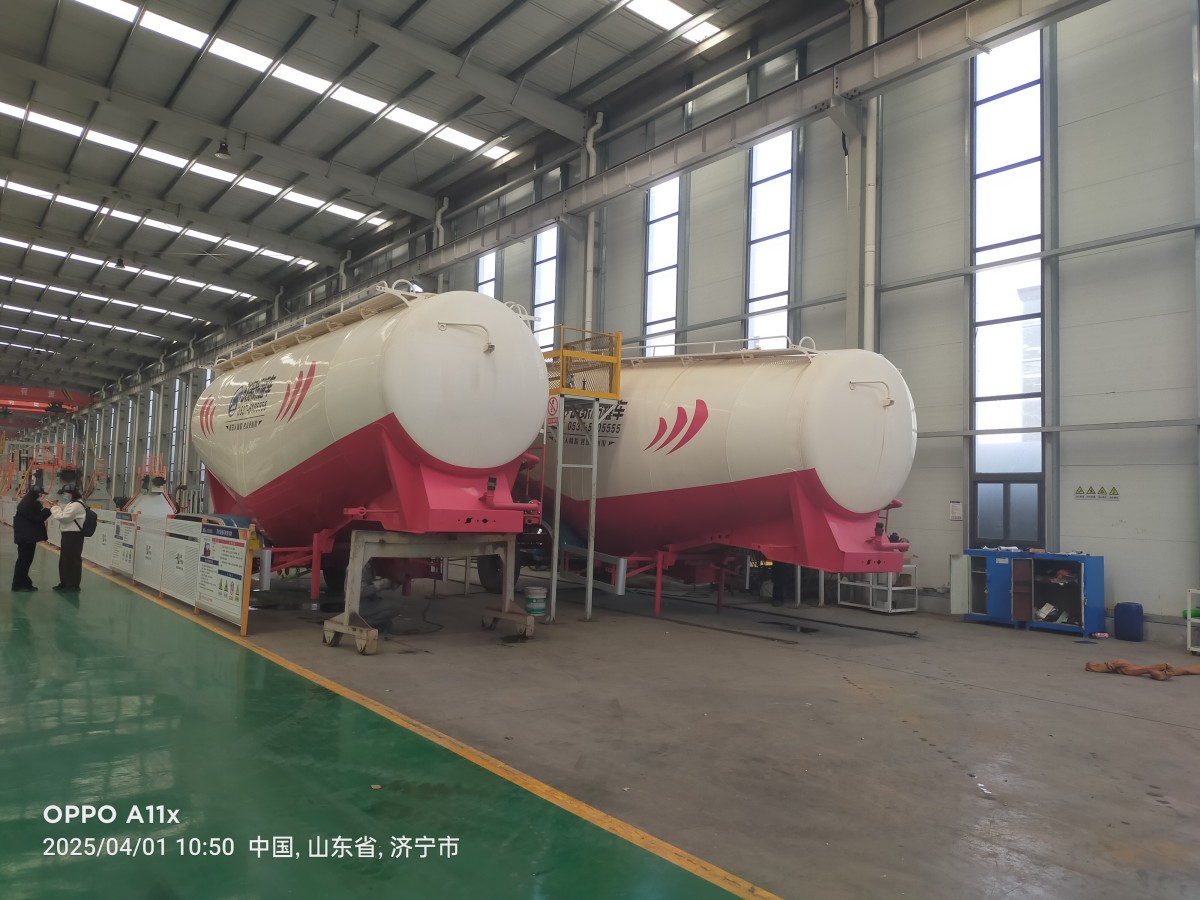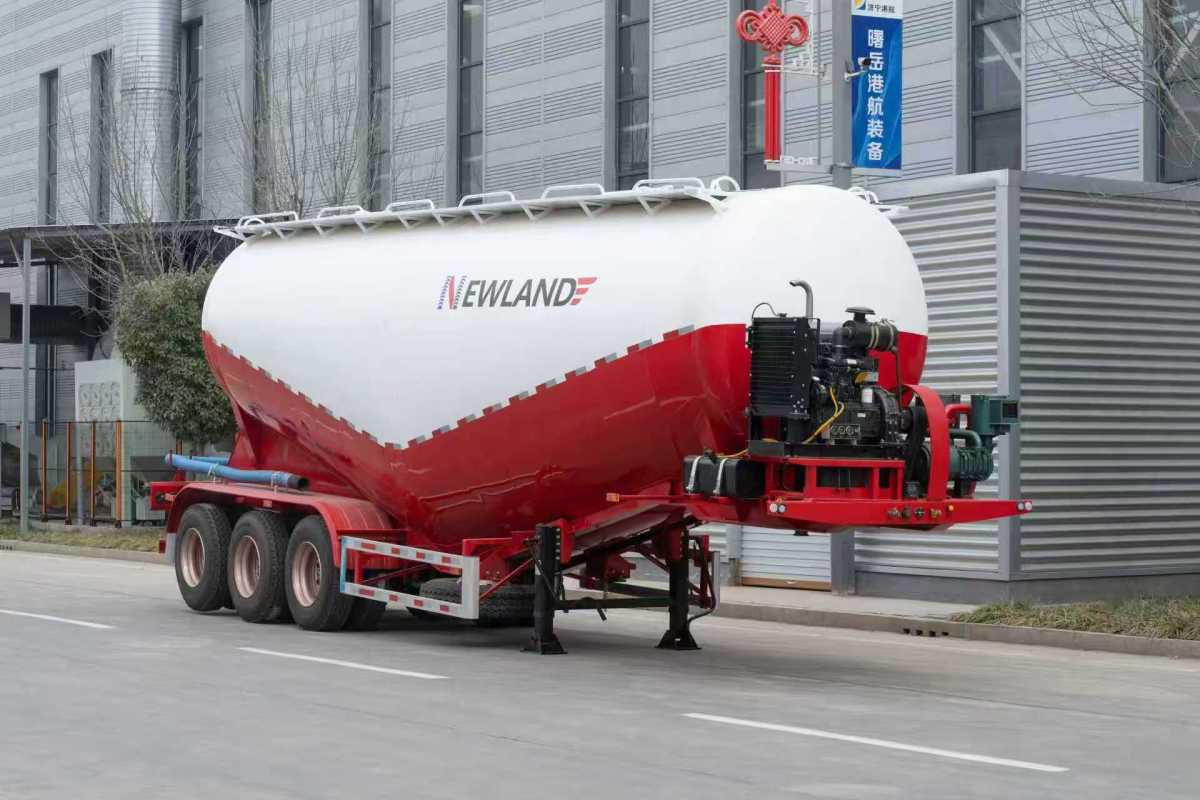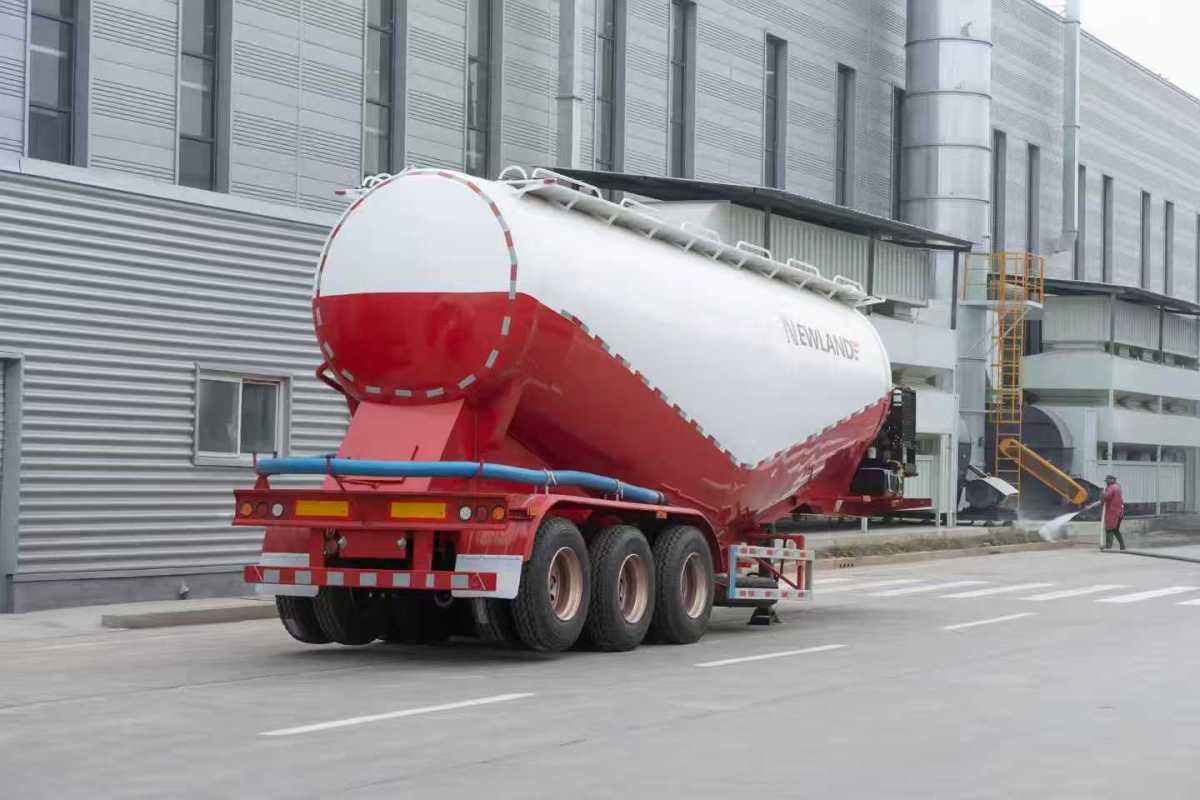Parameters of 45 cubic meter bulk cement semi-trailer
Detailed parameter analysis of 45 cubic meter bulk cement semi-trailer.
Wow, in the field of logistics transportation, 45 cubic meter bulk cement semi-trailer is quite important! Its various parameters directly determine its performance and scope of application. Below, we will provide a detailed list of its parameters.

1、 Size parameters.
1. Length: Generally speaking, the total length of a 45 square meter bulk cement semi-trailer is about 13 meters. The setting of this length is a comprehensive consideration of multiple factors. On the one hand, it is necessary to comply with the length restrictions of road transportation regulations to ensure that vehicles can safely travel on various roads; On the other hand, such a length can balance the turning radius and handling performance of the vehicle while ensuring the tank capacity. If it is too long, the vehicle will become difficult to turn and increase the driving risk; However, if it is too short, it cannot meet the volume requirement of 45 cubic meters.
2. Width: The width is usually around 2.5 meters. This width is designed to accommodate the standard lane width, ensuring that vehicles do not exceed the prescribed limits while driving on the road, and also promoting vehicle stability. Being too wide can affect the passage of vehicles on narrow roads, while being too narrow is not conducive to the layout and maximum utilization of tank capacity.
3. Height: The overall height of the vehicle is approximately between 3.8 meters and 4.2 meters. The design of height should consider passability, such as being able to smoothly pass through various height limiting facilities such as bridges and culverts. At the same time, the issue of the vehicle's center of gravity should also be considered. A too high body will cause the center of gravity to shift upward, reducing the stability of the vehicle's movement. Therefore, it is crucial to control the height reasonably while ensuring the tank volume and passability.

2、 Tank parameters.
1. Capacity: Clearly defined as 45 cubic meters. The determination of this volume is based on market demand and transportation efficiency. For cement transportation, a volume of 45 cubic meters can meet the construction needs of a certain scale in one transportation, without increasing costs due to frequent transportation caused by a small volume, nor causing inconvenience during loading, unloading, and transportation due to a large volume.
2. Material: The tank body is generally made of high-quality carbon steel material. Carbon steel has high strength and good corrosion resistance, which can withstand the weight and internal pressure of cement, and resist the invasion of cement and other substances during long-term use
Corrosion ensures the service life of the tank. Some high-end semi-trailer tanks may use alloy steel materials to further improve the performance of the tank, but the cost will also increase accordingly.
3. Thickness: The thickness of the tank body is usually between 6 millimeters and 8 millimeters. This thickness ensures that the tank has sufficient strength to withstand the pressure of internal cement, preventing deformation or rupture of the tank. The thickness of tanks produced by different manufacturers may vary slightly, depending on the manufacturer's consideration of the balance between quality and cost.

3、 Chassis parameters.
1. Axle: Generally equipped with 3 axles. The number and load-bearing capacity of axles are determined based on the total weight and design load of the vehicle. Three axles can reasonably distribute the weight of the vehicle, ensuring stability and safety during driving. The load-bearing capacity of each axle is usually around 10 to 13 tons, so that the entire chassis can carry enough weight of cement and the weight of the tank itself.
2. Tires: Common tire specifications include 12R22.5. This specification of tire has a large contact area, which can provide good grip and stability. At the same time, it has strong load-bearing capacity and can adapt to the driving needs of vehicles under full load conditions. The quality and performance of tires are crucial for the safe driving of vehicles, so well-known brands of tires are generally selected to ensure their reliability.
3. Suspension system: Air suspension system is commonly used. Air suspension has good shock absorption performance, which can effectively reduce the bumps and vibrations experienced by vehicles during driving, protecting the tank and cargo. It can also automatically adjust the suspension height according to the vehicle's load situation, ensuring the smoothness of vehicle travel. Compared to traditional steel plate suspension, air suspension has significant advantages in comfort and stability.

4、 Performance parameters.
Maximum load capacity: generally between 30 tons and 35 tons. This load capacity is determined based on various factors such as the vehicle's chassis load-bearing capacity, tire load, and regulatory requirements.
Mr. Owen Zhang
owen@vehiclemaster.com
+86 15269108961

Get real-time quotes
Interested? Leave your contact details.
